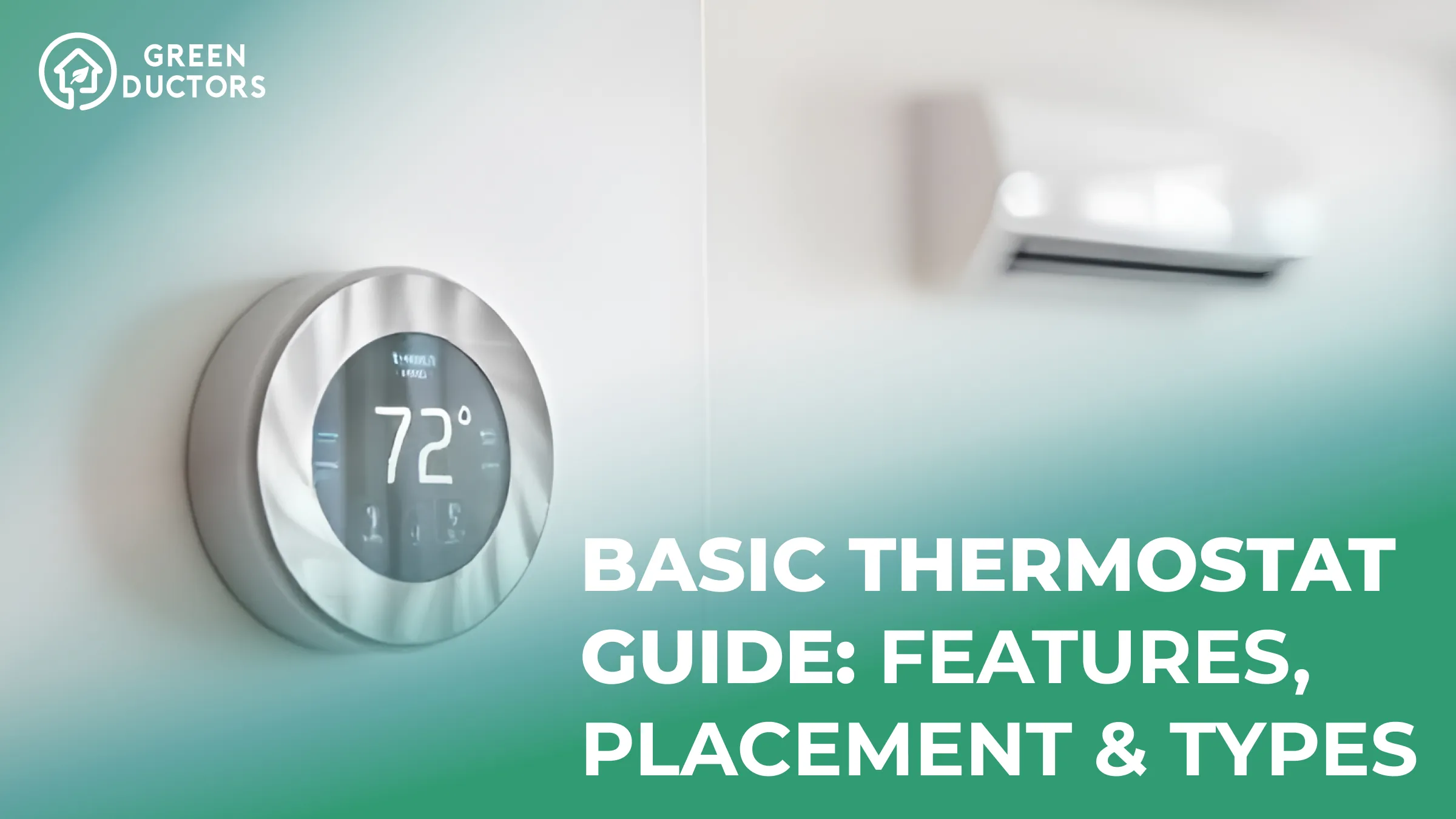If you think about it, thermostats are small but mighty. They help keep your indoor air temperature comfortable, and in many cases affect your energy usage. In today’s guide we’re going to go over all things thermostats so you can make the best decision for your space.
What is a thermostat and how does it work? In general a thermostat works by sensing the current surrounding temperature, sending commands to the HVAC system to either heat or cool, and monitoring the temperature throughout. If said temperature goes outside the needed range, the thermostat responds accordingly by cycling the system on or off.
Keep in mind that older models do work but they are not nearly as optimized as newer models and can have higher energy usage overall. For example, in newer air conditioning thermostat models, you can set precise temperature control, program to your schedule, and even turn on energy-saving mode. If you truly want to optimize, we recommend switching to a newer model.
Nonetheless, the placement of the thermostat also has its impact. You don’t want to have your thermostat in places where temperature can greatly fluctuate and impact the readings. For example, placing the thermostat close to appliances that give off heat, near drafty vents and windows, or in direct sunlight should be avoided. Ideally, the thermostat should be placed in a central part of the home where there are no drafts.

Types of Thermostats for New York & New Jersey Homes
When it comes to thermostats, there are a few different types. If you know your options, you can choose the model that best fits your space and needs, so let’s take a look:
Mechanical
These are probably as basic as it gets, but that’s also what makes them affordable. Mechanical thermostats aren’t programmable, and typically work on a bi-metallic strip that either expands or contracts based on the surrounding temperature.
Digital Non-Programmable
Also offer relatively simple temperature management. They can provide precise temperature control, but lack the ability to schedule.
Programmable
Here we start getting a tad more advanced. This option allows you to set schedules for heating and cooling, this is a benefit as it can reduce energy usage especially for times when no one is home.
Zoned
Zoned thermostats allow you to set different temperatures in different areas. This makes them a good choice for large spaces (like offices) that have different temperature needs.
Smart
If you’re a tech lover we’re now starting to hit your categories. Smart thermostats can be integrated with smart home ecosystems. They’re enabled via wifi and can be controlled by your smartphone. Plus, they’re capable of learning your habits (like having a cooler space at night, and turning up a few degrees during the day) and adjusting accordingly.
Bonus: Geofencing Units
This add on uses your location to adjust the settings. For example if you’re coming home from work, the thermostat reads your location via your phone and starts preparing your home’s temperature to your desired level. This option may not be for everyone simply because it’s quite advanced. It has high upfront costs, complex installation, and frankly it’s not available in all geographical regions. But if it is available to you, it’s environmentally friendly and can offer significant long-term energy savings. Geothermal units often pair well with smart thermostats.
Understanding Thermostat AC Recovery Mode: What It Means & How It Works
This is a feature that’s typically available in smart and programmable thermostats. Recovery mode allows the thermostat to reach a desired temperature at a specific time. For example if you want you space to be at 72 degrees by 9am, the thermostat will calculate when it needs to start heating or cooling to make your request happen. But do bear in mind that this setting should be used intentionally, as it can put extra wear and tear on your system.

Conclusion: Choose the Right Thermostat for Comfort & Savings in NY & NJ
There’s quite a few options out there, and by being informed you’re able to improve your home’s comfort by matching your needs to the options available. You can create a cost-effective HVAC system if you simply take the time to assess your needs, so don’t wait and invest in your space. If in doubt, don’t hesitate to reach out at (888)334-1612 or fill in our contact form and our team will be happy to advise you. Our team is also able to come out for an estimate should you need one.

